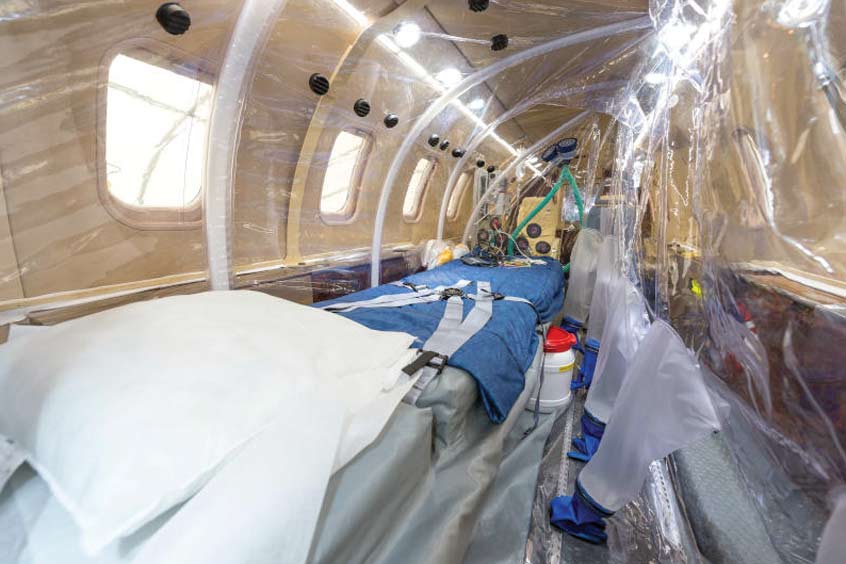Why visit ACE ’25?

2020 will be remembered as a year like no other, when coronavirus forced everyone to find new ways to live and work. For Luxembourg airport-based European Air Ambulance (EAA), this meant adapting quickly but safely, using its experience to navigate 2020 and inform the way ahead into 2021 and beyond.
Despite the difficulties, there were many positives and some major achievements for the EAA family. The most immediate was developing COVID-secure transport methods, a crucial requirement to be able to operate safely in the new reality of life in the pandemic. EAA already had experience of transporting patients with infectious diseases, most notably Ebola, and this gave it a head start in finding ways to deal with COVID while keeping patients and staff safe. New and streamlined procedures were put in place, along with protocols for staff to follow at every stage of a mission, depending on whether patients had a positive, negative or unconfirmed COVID status.
In many cases EAA's infectious disease unit (IDU) was used. This tent-like module was originally designed for the transport of Ebola patients, but was adapted and is now being used solely for COVID missions. It ensures the patient and their belongings remain isolated from the aircraft and crew, but allows medical teams to administer necessary treatment, even intensive care, through pockets in the enclosure. Smaller isolation systems such as the Iso-Pod or EpiShuttle are also available for transport where appropriate. Other measures include airlock entry to and exit from the IDU, bagging of possessions in sealed and disinfected containers, staff disinfecting their colleagues and the secure bagging and incineration of all PPE.
At the height of the first pandemic peak last summer, and at the request of the Luxembourg government, EAA and parent company Luxembourg Air Rescue (LAR) transported COVID patients between hospitals in France, where health services were overstretched, and medical facilities in neighbouring countries. One of the first such missions involved a 57-year-old who was on life support battling the virus in hospital in Metz. The Grand Est region was in the grip of COVID, and medical teams were struggling with the number of patients. EAA flew the patient to Luxembourg, where despite his initially poor condition, he improved and some weeks later was flown home; an early success story that was repeated many times.
This cross-border COVID collaboration saw LAR honoured for outstanding work during the pandemic as a joint recipient of the Adenauer-De Gaulle Prize for 2020. Created by the French and German governments in 1988, tne prize is awarded to individuals, initiatives or institutions that have made an outstanding contribution to the consolidation of Franco-German friendship.
One of EAA's ambulance jets made headlines in October, when sporting superstar Cristiano Ronaldo needed to travel from his home in Portugal to Italy. He had tested positive for coronavirus and so EAA enabled his journey on one of its Learjets, travelling in the IDU.
EAA says that the situation worldwide brought into focus the importance of fighting the spread of all viruses and infectious diseases, and showed that an increasing number of patients will need to travel in isolation units. These take up space in the aircraft, so EAA is considering the addition of larger aircraft to the fleet that would provide more internal room and add efficiency through being able to fly longer-range missions with fewer fuel stops and stopovers. Two of the existing fleet of Learjets have therefore been sold, and decisions will be made on future additions when the global health situation allows.